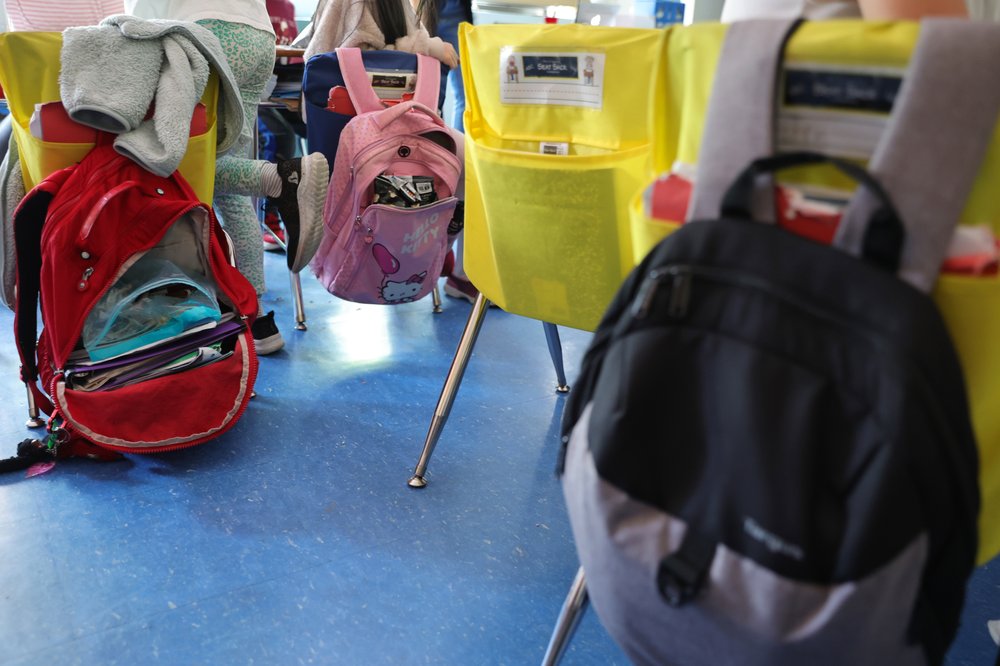Migrant surge fuels record number of homeless NYC students
Nov. 1, 2023, 10:59 a.m.
The long-standing problem of student homelessness became more dire in the 2022-23 school year, according to an analysis of state data.

More than 119,000 New York City students, or roughly 1 of every 9 public school kids, experienced homelessness last year – a record high likely fueled by the arrival of more than 100,000 migrants since spring 2022 – according to a new report.
The analysis of state data by the group Advocates for Children found that the number of students forced to live in shelters, motels or doubled up with others went up across all five boroughs. It was highest in the Bronx, where approximately 1 in 6 students were homeless in the 2022-23 school year.
Kim Sweet, executive director at Advocates for Children, said the data, which covers students in traditional public and charter schools, highlights the urgent need for more school staff at shelters.
“The city should be increasing shelter-based public school staff to meet the tremendous need, and at the very least needs a plan to sustain these critical services,” Sweet said in a statement.
Last year, the school system hired 100 coordinators to help enroll students and connect them with educational services and support, but those coordinators are being paid with temporary federal dollars that are running out.
Student homelessness is a long-standing problem: The 2022-23 school year was the eighth consecutive year where the number of students experiencing homelessness topped 100,000.
Housing instability causes tremendous educational challenges, driving up chronic absenteeism and dropout rates, according to experts. Students who experience homelessness also score far lower in reading and math than their peers.
Advocates worry the problem will worsen after Mayor Eric Adams’ recent decision to limit shelter stays for migrant families to 60 days. The policy shift means children will have to move during the school year, which will likely lengthen their commutes to their current schools, or cause them to switch schools.
“While students who move to a new shelter placement have the right to stay in their original school, we know from our experience working with families that this is often a right in name only,” said Jennifer Pringle of Advocates for Children. “Between delays in arranging busing, a shortage of bus drivers, unreasonably long commute times, and other obstacles, parents often feel they have no choice but to uproot their children from schools they love when they move shelters.”
Adams has said his administration is focused on avoiding disruption to students’ education as migrant families in shelters begin receiving the 60-day notices.
“Although [federal] stimulus funding is expiring, ensuring continued support for these student populations remains essential,” said Jenna Lyle, a spokesperson for the city's education department.
The Adams administration said in September that more than 19,000 students who are living in shelters and are presumed to be migrants have enrolled in public schools since last year. DOE schools do not ask about students' immigration status when they enroll, but use students' temporary housing status as a proxy for measuring how many are migrants, officials have said.
Thousands of migrant students head to school in NYC for 1st time NYC schools initiatives face $700M gap as federal COVID funding dries up: advocates